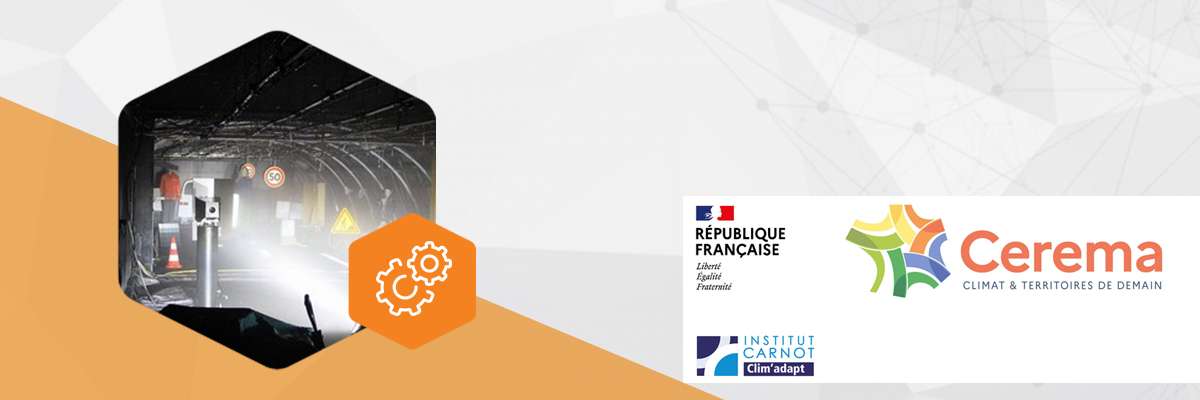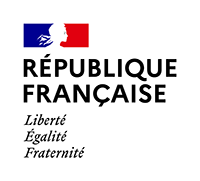
This platform, located in Clermont-Ferrand, brings specific skills into play combined with a unique facility that can simulate full-scale artificial and controlled rain and fog conditions. The equipment is listed as part of LABEX ImobS3, “innovative mobility: smart and sustainable solutions”, as part of the PAVIN B-P (Auvergne Platform for Smart Vehicles - Fog-Rain regional platform).
Service offering
The platform is used to reproduce and control fog generated, through meteorological visibility and the particle size of the drops. For rain, intensity is controlled. The sensors used allow physical characterization of artificial fog and rain. Some are portable and can be used for acquisitions in natural sites.
The platform offers a variety of applications, including:
-
Developing methodologies for comparing artificial vision and human vision systems
-
Development of algorithms for analysis and image processing in adverse weather conditions
-
Application and development of new imaging technologies in the specific conditions of fog (infrared, laser, etc.) or driving assistance techniques (obstacle detectors, etc.),
-
Performance measurement for innovative lighting and signage systems
-
Development of test methods of visual field, using video-photometry
-
Studying driver perception in low visibility conditions (target detection tests, readability, etc.)
Human and hardware resources
Physical resources
-
The facility takes the form of a covered track about thirty meters long, specially designed and instrumented with different equipment (artificial vision systems, transmissiometers, rain and fog generator, photometers, particle size gauges, radiometers, videophotocolorimeter and spectropluviometer). Tests can be performed by day or by night.
-
The laboratory connected to the platform also has equipment for measuring the photometric characteristics of the objects examined (luminance and colorimetry).
-
The platform comes with a dedicated facility consisting of a test bench equipped with various measuring equipment for characterizing the photometric properties of signalling equipment or road surfaces.
Human resources
-
The team is skilled in the areas of visibility in adverse weather conditions, accident and road risk analysis, driver perception, and mobility aids, and is skilled in all associated techniques and procedures:
-
physical measurements, data processing and modelling
-
vision tests and psychophysical methods
-
artificial vision techniques, image analysis
-
References and clients
National research projects
-
COMET research operation, weather-sensitive characterization of road and traffic surface conditions:
-
characterization and modelling of natural fog in the PARISFOG project with Météo-France
-
fog chamber assessment of various imaging techniques: infrared, laser, etc.
-
-
Study on Visual Perception and Motor Anticipation, LABEX ImobS3:
-
capturing visual information in adverse conditions, the influence of context
-
interactions between saliency and relevance for visual perception
-
-
Project FUI SURVIE: Road user safety and visibility. A pilot project by Nexyad, in partnership with UGE, Valeo, Saint-Gobain, Aximum and Oktal:
-
assessment of visibility "measurement" systems under controlled artificial rain
-
observer panel tests to characterize "human vision"
-
comparison of the performances of human vision and artificial vision systems
-
-
Project FUI AWARE “All Weather All Roads Enhanced vision”: develop an “all weather/conditions” visibility sensor, especially for use in adverse conditions such as at night and in fog, in order to see the vehicle’s surroundings and detect risks, as part of an effort to provide an affordable solution. Its applications target the automotive and aerospace industries.
European research projects
-
European project H2020 DENSE: aDverse wEather eNvironmental Sensing systEm, a project conducted with private and academic partners, led by Daimler. It examines road perception in adverse weather conditions in order to develop new sensors.
-
European project H2020 SUFACE: led by INRIM (Italy), conducted in partnership with five metrology institutes. It is intended to provide the photometric characterization of road surfaces, in order to develop applications for lighting systems and autonomous vehicles.
You have a question ?

